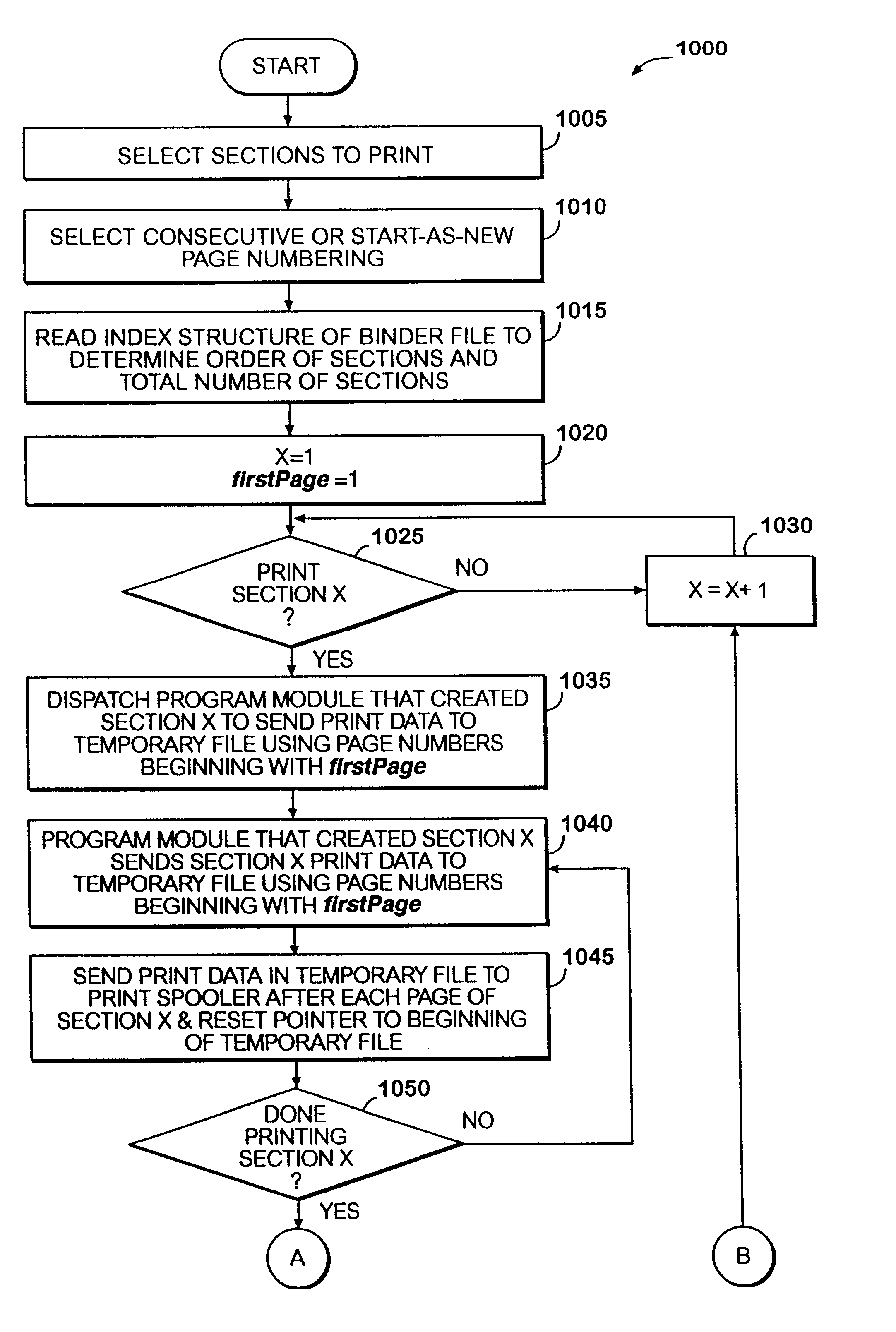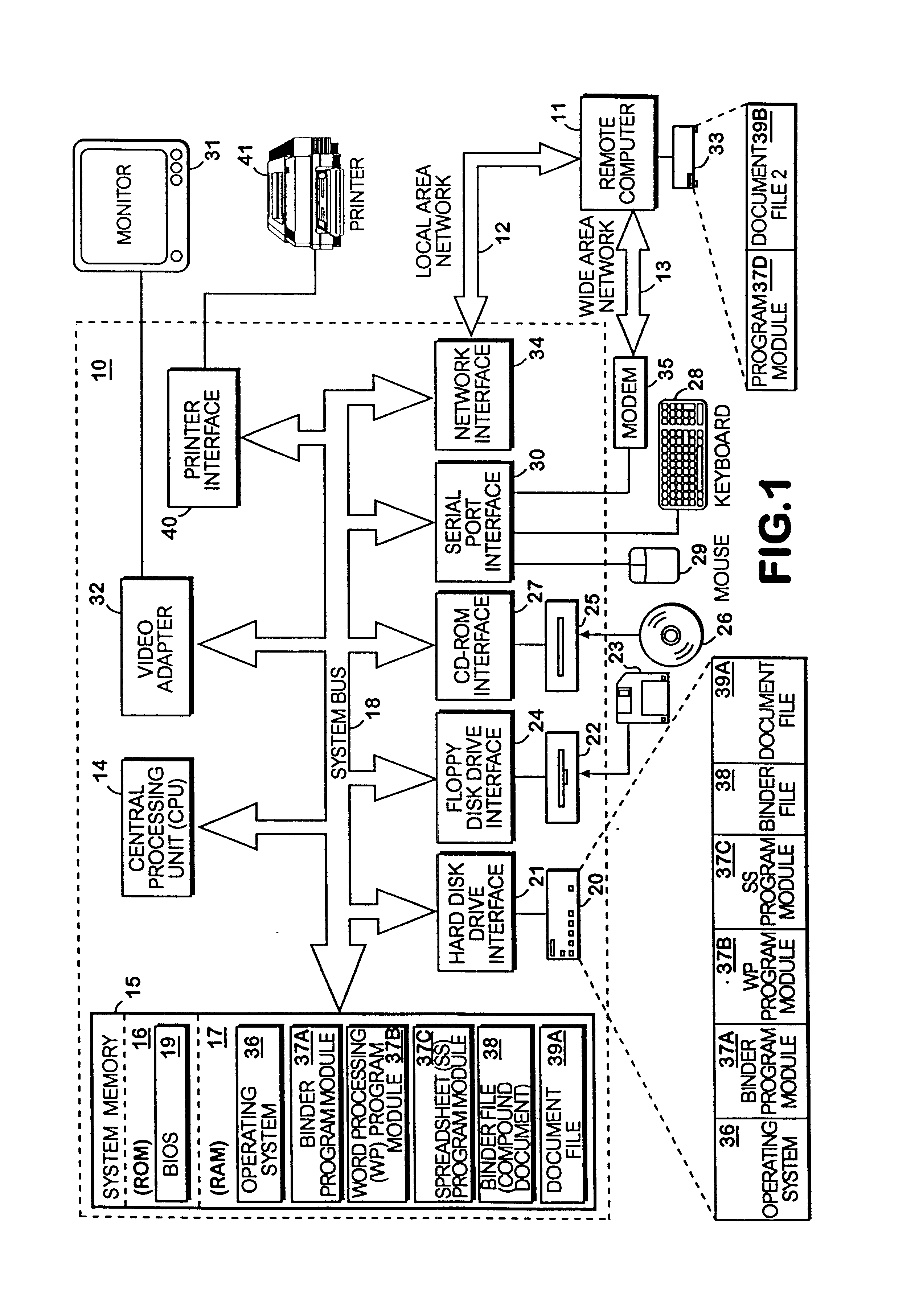System and method for printing ordered sections having different file formats
a file format and order technology, applied in the field of orderly section printing system and order printing method, can solve the problems of inability to maintain the file order in a user-definible order, the disadvantage of binding document sections together in the paper world, and the inability to easily rearrange the order of the binder file 38. , to achieve the effect of improving the usefulness of the binder file 38 and facilitating the rearrangement of the order
- Summary
- Abstract
- Description
- Claims
- Application Information
AI Technical Summary
Benefits of technology
Problems solved by technology
Method used
Image
Examples
Embodiment Construction
From the foregoing description, it will be appreciated that the present invention provides a system for storing, viewing, editing, and processing ordered sections of a compound document where the sections can have differing file formats. In an embodiment of the present invention, ordered binder document sections having different file formats can be stored within a binder file 38 which maintains the order of the sections and the native file format of each section.
The ordered sections can be viewed and edited through a viewport 225 of a frame 205 displayed by a binder program module 37a in another aspect of the present invention. By selecting graphical images 230a-c displayed in a selection area 220 of the frame 205, the content of a binder document section can be viewed without viewing the content of other binder document sections. The graphical images 230a-c can be icons but are preferably images, called thumbnail images, derived from the content of sections.
In another aspect of the...
PUM
 Login to View More
Login to View More Abstract
Description
Claims
Application Information
 Login to View More
Login to View More - R&D
- Intellectual Property
- Life Sciences
- Materials
- Tech Scout
- Unparalleled Data Quality
- Higher Quality Content
- 60% Fewer Hallucinations
Browse by: Latest US Patents, China's latest patents, Technical Efficacy Thesaurus, Application Domain, Technology Topic, Popular Technical Reports.
© 2025 PatSnap. All rights reserved.Legal|Privacy policy|Modern Slavery Act Transparency Statement|Sitemap|About US| Contact US: help@patsnap.com



